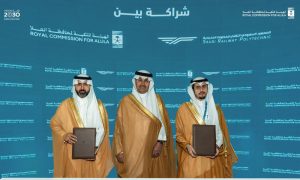UAE storms point to weak spots in building design, and attitudes
Rhys Steel, a Chartered Building Surveyor in Cavendish Maxwell’s Project and Building Consultancy team, reacts to the damage caused by the recent storms in the UAE.
During the last week the UAE has been subject to severe storms including heavy rainfall and winds. This weather has highlighted that some buildings and infrastructure are not designed to meet the demands of this uncharacteristic weather. We have seen car park expansion joints opening up and water streaming in, shopping malls swimming with water, ceilings collapsing, roads turning into rivers and roofs being blown from buildings.
These events highlight two main issues: The first is that buildings and infrastructure are not designed to consider the likelihood of this extreme weather as there is generally the attitude that “it never rains in the UAE” and secondly the issue of whether you are insured if your properties or possessions are damaged.
Building and infrastructure design
The water tightness and wind resistance of a building is established when it is designed. The design of a building should take into consideration the climate in which it is constructed and also allow for the extremities to ensure that a building is futureproof. Buildings tend to have two basic waterproofing mechanisms; the below-ground waterproofing that protects the building from water in the ground and the above ground waterproofing that protects the building from the natural elements such as rainfall. This week we have seen the failure of the latter and in particular, the details at construction joints. These are considered “weak spots” and are prone to water penetration in extreme conditions, due to the fact that a construction joint is weak.
If you have been in the UAE this week you will also undoubtedly have seen flooded roads and highways. The main reason for this is the lack of sufficient drainage. As previously mentioned the design of buildings and infrastructure does not consider heavy rainfall and therefore villas do not have gutters and downpipes, balconies in high rise residential towers tend to have small drainage outlets and roads do not have drains for the water to run into and as a result the water ponds. As we have seen this week this can cause streets to effectively become rivers as highlighted on social media with members of the public kayaking through what previously were streets.
The extreme wind has caused issues with industrial buildings. Aluminium sheet roofing panels have been stripped from the frame and this can be caused by the fixing being insufficient and an ineffective design allowing the strong winds to get a grasp of the panels and tear them off.
As Chartered Building surveyors we are experts in diagnosing defective construction in buildings. All of our building surveyors are UK trained and are therefore well rehearsed in diagnosing defective waterproofing and inadequate design in buildings and recommending suitable repair solutions and designs for appropriate detailing.
It is recommended that an expert is involved at the earliest possible stage in a buildings lifecycle to advise on defective waterproofing details at design stage and monitor the construction of the waterproofing details and construction quality in general during the construction phase.
Existing buildings can be inspected for waterproofing defects, the survey is executed in a two stage approach: The first is a desktop review of the construction details to establish any “weak spots” and to ensure that the details are sufficient to withstand extreme climactic conditions, and the second is a visual inspection of the construction to access the condition and establish any potential issues that may arise from defective construction.
Equipment such as a borescope can be used to access voids in the building that cannot be seen with the naked eye. Repair solutions can then be proposed in order to ensure that during the next bout of extreme weather the building can withstand the wind and rain.
Insurance
It is important that as a building owner or tenant you understand your insurance responsibilities, and sadly it is all too common in the UAE for building and contents to be underinsured or in a worst case scenario no insurance at all to be in place.
If you live in an apartment block or lease a unit in a tower the Owner’s Association Manager will be responsible for ensuring that the building structure is insured, but this may not cover your contents. If water damage occurs in your unit and your possessions/equipment are damaged you would only be covered if you had taken out your own contents insurance and the policy was sufficient to cover for this event. If you own a villa or detached commercial unit you will most likely be responsible for insuring both the building and its contents.
It is important that your building and its contents are insured for the correct value to ensure that you are suitably covered in the event of a total loss.
An insurance reinstatement valuation of the building can be undertaken to ensure the building is suitably insured and for commercial buildings, our plant and machinery valuations team can value your assets to ensure they are adequately insured and can be replaced like for like in the event of flooding. This adequate insurance will mean that the impact on business continuity can be minimised.
If we have learnt anything from the last few months it is that buildings in the UAE have to be built to withstand the elements. They need to be constructed with consideration of high temperatures, heavy rainfall, strong winds and the risk of fire, and insurance needs to be adequate to reflect the risk.
Rhys Steel is a Chartered Building Surveyor in Cavendish Maxwell’s Project and Building Consultancy team.





















